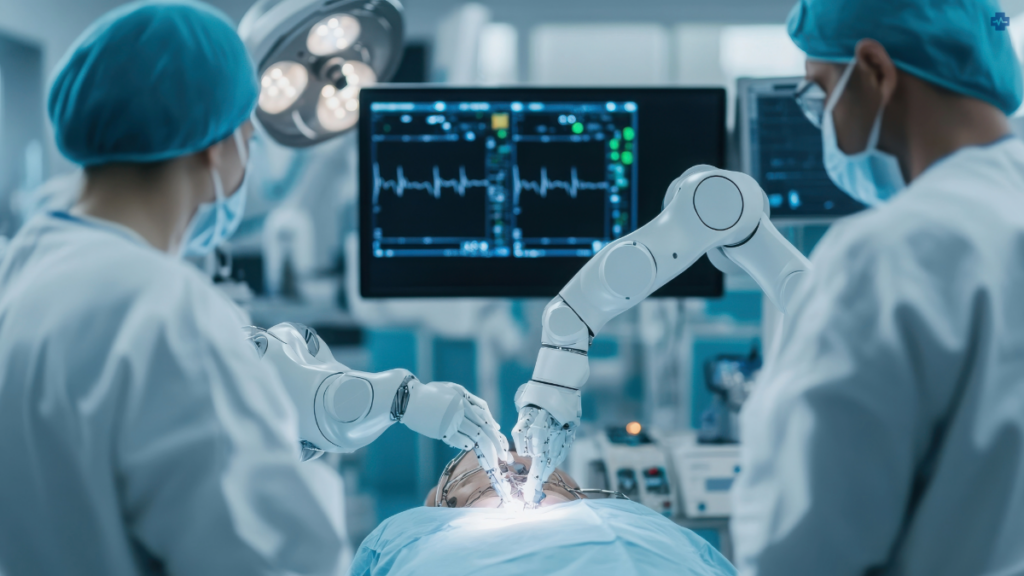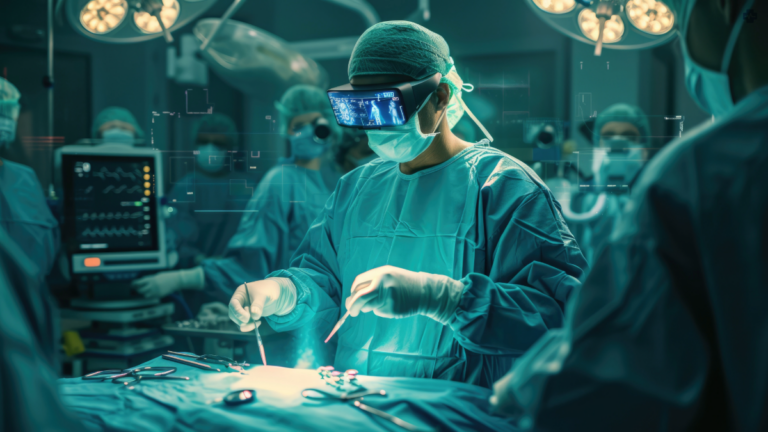Mixed Reality (MR) blends the virtual and physical worlds. Now it is transforming the medical field, particularly in surgery. Technologies like Virtual Reality (VR) and Augmented Reality (AR) have already had significant impacts. Examples of using VR for pre-surgical planning or AR for overlaying information in real-time during procedures, have been demonstrated. Now, MR takes these advancements a step further by allowing surgeons to interact with 3D digital models in the real world. It is enhancing precision and safety in surgeries.
Understanding Mixed Reality in Surgery
Mixed Reality combines elements of both VR and AR, enabling interaction between real-world objects and digitally generated elements. Devices like Microsoft’s HoloLens and Magic Leap have been at the forefront of this revolution. What makes MR unique is its ability to anchor virtual images onto physical objects, allowing surgeons to view and manipulate 3D models of patient anatomy during procedures. But this is not when the sci-fi stops.
In surgical settings, MR is now being used in several transformative ways. For preoperative planning, surgeons can visualise complex anatomy derived from CT or MRI scans. This is helping them plan procedures more effectively. For instance, orthopaedic surgery utilises MR to visualise bone structures. This is enabling better placement of implants. During surgeries, MR offers hands-free interaction, allowing surgeons to view patient data and 3D organ reconstructions without needing to look away from the operating field. This integration of real-time data improves accuracy in locating tumours. Navigating around delicate structures like nerves and blood vessels also becomes easier.
MR is also being used to improve surgical training. It is enabling residents to practise procedures in a virtual space that mimics the real world. These immersive environments provide invaluable experience, reducing the learning curve when transitioning to live surgeries. MR also enhances collaboration. Surgeons across different locations are able to view and assist in real-time surgeries, improving outcomes through global expertise. But it does not stop there.

The major advantages of MR in surgery include increased precision and efficiency. With 3D models overlaid on patients, surgeons can reduce errors and lower complication rates. This technology also shortens surgery times as it eliminates the need for external reference points. This is leading to quicker recovery times for patients. Additionally, MR’s ability to facilitate live consultations means experts from different regions can contribute to complex cases in real-time.
Despite its potential, MR in surgery faces many challenges. The accuracy of MR depends on ensuring perfect alignment between virtual and real-world images. This is requiring sophisticated tracking and calibration technology. Latency issues (delays in rendering or interaction) pose risks in high-stakes surgical environments. Additionally, the cost of MR devices, like the HoloLens, remains a barrier for smaller hospitals and clinics. Long-term use also raises concerns about ergonomics. Wearing MR headsets for extended periods can become uncomfortable for surgeons.
Looking to the future, the integration of artificial intelligence (AI) and robotics with MR could further revolutionise surgery. AI could assist in decision-making during operations, while robotic instruments controlled through MR visualisations may offer unparalleled precision in complex procedures. MR technology continues to evolve. It is expected to become more affordable and accessible. It is expected to be made into a standard in surgical practice.
MR in Healthcare
Mixed Reality is growing both in the private healthcare sector and in public systems like the NHS. In private hospitals, MR is often adopted for advanced procedures. A cutting-edge option for patients who can afford it. However, public systems like the NHS are also exploring ways to integrate MR to improve outcomes while keeping costs manageable. With ongoing research and development, MR has the potential to become a widespread tool. Particularly handy for complex surgeries and real-time diagnostic applications. Stay tuned.

